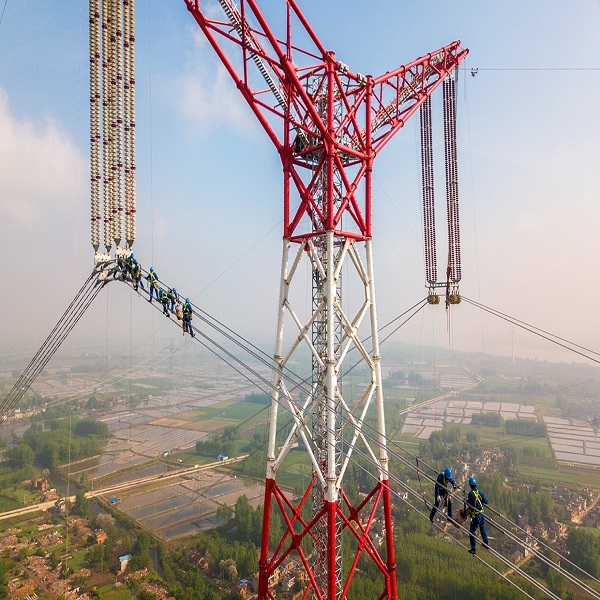Fossil fuels are among the world’s most traded commodities: About 75 percent of crude oil, 25 percent of natural gas, and 21 percent of coal production are traded internationally. Electricity, by contrast, is a minor affair: Only about 3 percent of total generation crosses borders.
That’s because fuels are easy to store and to ship. Intercontinental coal and oil trade (enabled, respectively, by large bulk carriers and crude oil and product tankers) have been around for generations, while the shipping of gas became practical with the launching of the first commercial liquefied natural gas (LNG) tankers in 1964. Distance thus ceased to be a big impediment to the global fuel trade. Crude oil’s most massive shipments now take the fuel from Ras Tanura, in Saudi Arabia, to Osaka, Japan, a trip of about 6,400 nautical miles (11,800 kilometers); LNG tankers carry gas from Qatar, around the Cape of Good Hope, and on to Spain—about 10,500 nautical miles.
In contrast, there is still no direct way to store huge quantities of electricity—only the indirect method of pumped hydro, and there is no easy way to move the electricity, given that losses to electrical resistance mount with increasing distance. To minimize those losses, planners increasingly resort to high-voltage direct-current (HVDC) links, difficult as these are to establish. Even if acquiring the requisite rights-of-way could be done easily, it would still cost a lot to build the accompanying towers, circuits, and terminals for rectifiers (which convert alternating current to direct current) and inverters (which convert DC to AC).
Each kilometer of an overhead 500-plus-kilovolt HVDC line costs at least US $1.2 million to construct, and for lines operating at the highest voltages (800 kV and 1,100 kV), the figure can approach $2 million. Burying the cables raises the expense as much as fivefold, and putting them undersea over long distances as is now contemplated will cost more, although the estimates are still highly speculative.
As a result, the world’s longest (3,324-km) ultra-HVDC lines, transmitting electricity from Xinjiang in China’s westernmost region to Anhui province, in the densely inhabited eastern region, cost nearly $6 billion. It would be even more expensive to do the same thing in the United States.
Of course, plenty of electricity can be sold across shorter distances by relying on shorter, lower-voltage HVDC (320–500 kV) links or on standard alternating-current lines (mostly 220–400 kV). The European Union’s members now transmit beyond their national borders more than 14 percent of their final electricity consumption. Bulgaria and the Czech Republic export electricity that is equivalent to 20 to 25 percent of their domestic consumption, while France sells about 14 percent and Sweden about 13 percent.
Germany, the EU’s largest economy, is now a net electricity exporter, selling the equivalent of nearly 10 percent of its consumption. The largest net importers are Hungary (about 35 percent of all consumption), Finland (nearly 25 percent), and Belgium (about 20 percent). In absolute terms, France (thanks to its reliable nuclear generation) is Europe’s largest net electricity exporter, and its recent sales of more than 60 terawatt-hours per year have been ahead of Canada’s net (largely hydro) electricity exports to the United States, which peaked at nearly 64 TWh in 2016 but are now just below 50 TWh.
Europe also has a small intercontinental electricity trade with Asia (400-kV AC trans-Bosporus connection with Turkey) and Africa (two 400-kV cables between Spain and Morocco, with another 700-kV link to be added soon), and numerous synchronized interconnections with Ukraine (which, in turn, is connected to the Russian grid). This network makes it theoretically possible to transmit electricity from Western Siberia to Portugal—and there are plans for a true Eurasian grid that would tie China to Europe.
In contrast, the U.S. transmission system remains overwhelmingly confined within three nearly separate grids—the Eastern Interconnection, the Western Interconnection, and the Texas grid. They are bridged only with what energy journalist David C. Wagman, as a guest contributor to the IEEE Spectrum Energywise blog, rightly called “puny” connections at the seams. That’s why the Texas grid was beyond help during the recent February freeze. A unified grid would balance loads, exploit efficiencies, and help to supply the coasts with wind power from the Great Plains and solar power from the Southwest.










